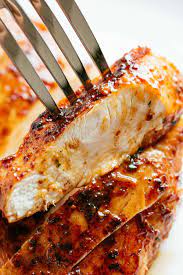Experience the art of culinary versatility with this essential guide on preparing a succulent chicken breast recipe. Offering a canvas for diverse flavors and cooking techniques, chicken breast serves as a cornerstone in countless culinary creations. This comprehensive guide navigates through various methods—from grilling and pan-searing to baking and braising—showcasing the versatility of this lean and protein-rich cut. With step-by-step instructions, this recipe ensures tender and juicy chicken breasts, whether you’re a seasoned home chef or an aspiring culinary enthusiast. Delve into this flavorful journey, discovering the secrets to perfecting this kitchen staple and unlocking a world of culinary possibilities right in your own home.

How to make chicken breast
Chicken breast is a lean and versatile cut of poultry that comes from the breast of the chicken. It's known for its relatively low-fat content and high protein, making it a popular choice for health-conscious individuals. This part of the chicken is typically boneless and skinless, providing a tender and mild-flavored meat that readily absorbs various seasonings, herbs, and marinades. Chicken breast is widely used in a multitude of dishes, ranging from grilling and baking to stir-fries and salads, and it serves as a fundamental ingredient in a wide array of recipes due to its adaptable nature and quick cooking time.
Ingredients
- 2 boneless, skinless chicken breasts
- Salt and pepper, to taste
- Olive oil or cooking spray
Instructions
- Pat the chicken breasts dry with a paper towel and season both sides with salt and pepper.
- Heat a skillet or pan over medium-high heat. Add a little olive oil or use cooking spray to lightly coat the surface.
- Place the seasoned chicken breasts into the heated skillet or pan. Cook for about 6-8 minutes on each side, depending on the thickness of the chicken breasts, until they're fully cooked. Use tongs to flip the chicken halfway through the cooking process.
- Ensure the chicken is thoroughly cooked. The internal temperature should reach 165°F (74°C). You can use a meat thermometer to check the temperature at the thickest part of the chicken.
- Once done, remove the chicken from the pan and let it rest for a few minutes before slicing or serving. Resting helps the juices redistribute, ensuring a juicy and tender result.This basic method offers a simple and quick way to cook chicken breasts. The key is to avoid overcooking, as they can become dry.
Video
Notes
An essential point to note when preparing chicken breast is to avoid overcooking, as it can lead to dry and tough meat. Chicken breasts cook relatively quickly, so it's crucial to monitor the cooking time closely, especially if using high heat methods like grilling, pan-searing, or baking. To ensure a moist and tender result, use a meat thermometer to check the internal temperature. Chicken breast is safe to eat when it reaches an internal temperature of 165°F (74°C), but removing it from the heat a few degrees lower and allowing it to rest for a few minutes will help retain its juiciness as it continues to cook slightly during the resting period. This careful approach ensures a perfectly cooked and flavorful chicken breast.
Nutrition
Serving: 85g
Tried this recipe?Let us know how it was!
